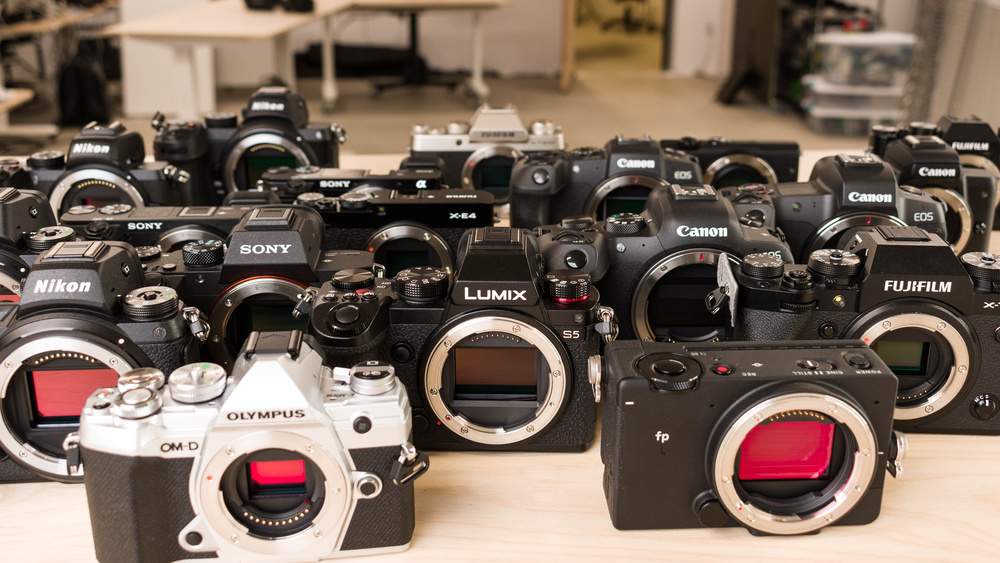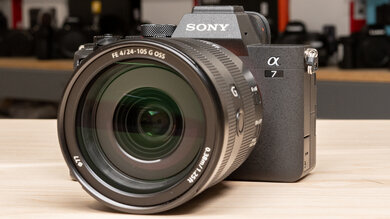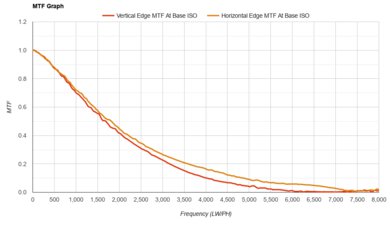
With camera stalwarts like Canon and Nikon announcing they'll no longer produce new DSLRs, mirrorless cameras have all but won the camera technology wars. While, for some, that may mean there's no better time to get a DSLR, as their prices drop, getting a mirrorless camera is the way to go if you want to enjoy the best that camera tech offers.
While we firmly believe that you don't need the latest or greatest camera to take good photos or enjoy photography—and we even think DSLRs can be some of the best cameras for beginners—mirrorless cameras have a few advantages. They're typically more portable than traditional DSLRs, feature responsive, precise autofocus systems, and have electronic viewfinders that let you preview exposure adjustments in real time. They've come a long way in a short period of time, with a constantly expanding market of different models to suit a range of budgets and experience levels.
The good news is you can't go wrong with any modern camera released within the past few years. But we've bought and tested over 90 cameras in our lab to help you narrow down your options. Below, you'll find our top mirrorless camera recommendations for most people. If you're specifically looking for a full-frame model, check out our best full-frame mirrorless cameras article instead. If you're buying your first camera, you might also want to look at our top mirrorless cameras for beginners. If you're more interested in video, you can look at our favorite cameras for filmmaking or vlogging.
-
Best Mirrorless Camera
Travel PhotographyLandscape PhotographySport & Wildlife PhotographyVloggingStudio VideoAction VideoThe Sony α7 IV is the best mirrorless camera we've tested. If you're looking for a powerful hybrid camera that can handle all kinds of photo and video work, this is a sure bet. Improving on the best-selling Sony α7 III, it has a new 33-megapixel sensor that captures an amazing level of detail. On top of that, it has an updated autofocus system with some of the most reliable AF tracking on the market and advanced features like in-body image stabilization (IBIS) and dual memory card slots. It's also a video beast, with 4k recording at up to 60 fps, albeit with a notable crop, and internal 10-bit 4:2:2 capture.
Another great option at this price point is the Canon EOS R6 Mark II. It's a good alternative to the Sony if you need faster burst shooting, with a burst rate of up to 40 fps in its electronic shutter mode. Unlike the Sony, it supports RAW video output over HDMI and uncropped 4k at 60 fps. However, lens selection is much better for Sony's E-mount, with both native and third-party options available at various price points, making the α7 IV our top pick overall.
-
Best Mirrorless Camera For Video
Travel PhotographyLandscape PhotographySport & Wildlife PhotographyVloggingStudio VideoAction VideoThe Fujifilm X-H2S is one of the most capable APS-C cameras on the market and a great choice for advanced video work thanks to a stacked sensor that keeps rolling shutter effect to a minimum. Beyond that, it can record video in up to 6.2k and supports various codecs, including high-quality Apple ProRes formats. You also get advanced video features like Log recording in 10-bit 4:2:2 internally for a wider dynamic range and more flexibility in post.
It comes in a sturdy, well-constructed body with weather-sealing, has in-body image stabilization for smoother handheld camera movements, and has a long battery life. Its autofocus system is also Fujifilm's best yet. Overall, this is one of the best consumer mirrorless cameras you can get for video work for its price.
-
Best Upper Mid-Range Mirrorless Camera
Travel PhotographyLandscape PhotographySport & Wildlife PhotographyVloggingStudio VideoAction VideoThe Nikon Z 6II is a more affordable full-frame option than the Sony α7 IV and a fantastic camera for photography. Though it falls behind in advanced video features, this is still a well-rounded camera for amateurs and enthusiasts. You'll get excellent image quality from its sensor and very quick burst shooting for faster subjects. Plus, it handles like a dream, with amazing ergonomics and an intuitive user interface. Nikon's Z lenses are also spectacular, particularly the high-end S Line, although they can be quite pricy, and lens selection is still limited compared to competitors.
If you're looking for a more portable kit and don't mind giving up a full-frame sensor, the Fujifilm X-T5 is a fantastic enthusiast-oriented APS-C model that falls around the same price point. Though its smaller sensor doesn't handle noise in low light as well as the Nikon's full-frame sensor, its remarkably high 40-megapixel resolution captures stunning detail and gives you a bit more leeway to crop your images.
-
Best Mid-Range Mirrorless Camera
Travel PhotographyLandscape PhotographySport & Wildlife PhotographyVloggingStudio VideoAction VideoThe Canon EOS R7 is the best mid-range model we've tested. It's a well-rounded APS-C camera with everything you need to capture high-quality photos and videos. Although crop sensor RF lenses are still limited, you can always adapt EF lenses if you're already a Canon DSLR shooter. Besides, there's enough to love about this camera that it's still a top contender in this price range.
With a fantastic in-body image stabilization system, it's well-equipped for handheld video work or photos at slower shutter speeds. The camera also has best-in-class autofocus and quick burst shooting, so it's a great choice for sports and wildlife photography. Performance aside, it's also sturdy and weather-sealed, with an outstanding battery life among mirrorless options. If you're considering an APS-C camera for portability, you may prefer the Fujifilm X-S20, which is smaller and cheaper but has slower burst shooting and a slightly less reliable autofocus system.
-
Best Lower Mid-Range Mirrorless Camera
Travel PhotographyLandscape PhotographySport & Wildlife PhotographyVloggingStudio VideoAction VideoThe Fujifilm X-S10 comes at a lower price than the Canon EOS R7 but still offers a ton of value. If you don't need more advanced features like internal 10-bit recording and weather sealing, the X-S10 is for you. While it lacks the dedicated exposure dials that Fuji fans know and love, its simpler mode dial is more accessible to newcomers. The camera has a deeper, more comfortable handgrip than its higher-end sibling, the Fujifilm X-T4.
The kicker, though, and what makes this one of the best-value APS-C cameras around, is that you still get built-in image stabilization, a rarity for cameras at this price point. Beyond that, it also uses the same high-resolution sensor found on the X-T4, meaning similar image and video quality at a lower price point. Just don't forget to budget for the lens. Fuji lenses are pricier than the kit lens you get with a camera like the Nikon Z 50. The Nikon is a great alternative if you want to save a bit of money, though it doesn't have IBIS, and lens options are more limited.
-
Best Budget Mirrorless Camera
Travel PhotographyLandscape PhotographySport & Wildlife PhotographyVloggingStudio VideoAction VideoIf you're on a tighter budget but still want to buy new rather than dip into the used market, the Canon EOS R50 is one of the best bang-for-your-buck cameras you can get. With a portable body that makes it easy to grab and go, along with dead-simple controls and intuitive, creative shooting modes, this is a great entryway into "serious" photography for those who've never used a camera. Plus, its APS-C sensor captures excellent-quality images, and it has a highly effective autofocus system and good video specs for the price.
Lens options for Canon's RF-mount are still limited, but on the upside, the camera is compatible with both APS-C and full-frame RF lenses, which makes it easier to upgrade to a full-frame body down the line if you want to. If you'd like a more compact camera kit with more lens options available, the Olympus OM-D E-M10 Mark IV is a great alternative. However, its Four Thirds sensor isn't as well-suited to low-light shooting, and its autofocus system isn't as reliable.
Notable Mentions
- Fujifilm X-H2: The Fujifilm X-H2 is an incredible APS-C camera with a remarkably high-resolution sensor and 8k video capability. However, it's pricier than the Canon EOS R7 and less well-rounded for faster subjects. See our review
- OM SYSTEM OM-1: The OM SYSTEM OM-1 is one of the best Micro Four Thirds cameras we've tested. It's a great choice if you need something more rugged and portable than the Sony α7 IV or the Nikon Z 6II. However, its smaller sensor isn't as well-suited to low-light shooting. See our review
- Panasonic LUMIX S5: The Panasonic LUMIX DC-S5 is a great full-frame option that offers a ton of value for its price. It's a good choice if you're after high-end video specs, surpassing the capabilities of the Nikon Z 6II. However, its contrast-detection AF system and slow max burst rate make it less well-rounded for photography. See our review
Recent Updates
-
Sep 07, 2023: Checked that picks were still accurate and relevant to user needs.
-
Aug 11, 2023: Replaced the Canon EOS R6 Mark II with the Sony α7 IV and added mentions of the Fujifilm X-T5 and Fujifilm X-S20 as alternative options to some of our other picks.
-
Jul 12, 2023: Replaced the Olympus OM-D E-M10 Mark IV with the Canon EOS R50 and renamed it to the 'Best Budget Mirrorless Camera'; removed the Nikon Z 50 from the list but kept mention of it as a cheaper alternative to the Fujifilm X-S10; added the Fujifilm X-H2S as the 'Best Mirrorless Camera For Video'.
-
Jun 15, 2023: Removed mention of the Canon EOS R8 and added reference to the Fujifilm X-H2S as an alternative to the Canon EOS R6 Mark II.
-
May 15, 2023: Added the Canon EOS R8 as an in-text alternative to the Canon EOS R6 Mark II and added the Fujifilm X-H2 to Notable Mentions.
All Reviews
Our recommendations above are what we think are currently the best mirrorless interchangeable-lens cameras for most people to buy, according to their needs. We factor in the price, feedback from our visitors, and availability (no cameras that are difficult to find or almost out of stock in the U.S.).
If you would like to choose for yourself, here's the list of all our reviews for interchangeable-lens mirrorless cameras. Be careful not to get caught up in the details. There is no single perfect camera. Personal taste, preference, and shooting habits will matter more in your selection.





























